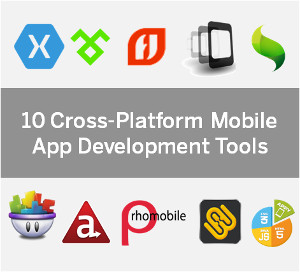6 Major Differences Between Android and iOS Development
Published on 18 October 16
1
1

Today, the mobile applications have become a need of every industry for their online business. Currently, Google's Android and Apple's iOS are best mobile application development platform that has launched millions of applications. If we are developing a mobile app, then the question arises here that which one is better and has all the qualities to mobile applications like development, design, usage, security, upgrades and others.
There are major differences between Android and iOS developments that help you choose the platform for using mobile applications.
1. Coding: The language used for coding in Android is Java, whereas in iOS is Objective-C or Swift, however, it has been recently utilizing the newer and faster language Swift. Swift has already become an open source. It is great opportunities for developers have been increased to a great extent. Maybe one day we will see Swift as a means of programming for Android. Android development can be done other operating systems, such as Windows and Linux; today, with Swift’s becoming open source and supporting Linux tools.
2. Integrated Development Environment: IDE (Integrated Development Environment) is a development tool where you can develop mobile applications. Android used to perform application development with Eclipse IDE using Android Development Toolkit; however, gradually it has shifted to Android Studio, which ultimately provided way to improved development process. Talking about Apple, the OS giant makes use of code for conducting the process. Now a day, there are two development tools suggested by Google and Apple. Those are relatively Android Studio and XCode. Previously, Android application development was performed in Eclipse IDE. Android Studio allows you to write and test Android apps using both Java and native development in C or C++, running the apps on connected devices or a simulator. The IDE seamlessly brings together all of the dependencies, tooltip help, documentation and source control and all for free on Windows or Mac. iOS development follows the strict 'closed loop' philosophy of Steve Jobs. You must use Xcode on a Mac to develop iOS apps (even underneath the likes of Xamarin), and if you want to test on a real device, you have to pay an annual subscription (currently £79), although you can use the simulator for free. However, you do have a choice on what language to use for development — either Objective C or Swift.
3. Flexibility in distribution platforms: It is relatively quite easy for the Android app developers to update the app after according to the reviews provided by the users on Google Play, on the other hand iOS app developers have to wait for two weeks, when it comes to making changes in the application that has been already uploaded on the Apple App Store. Android users can update an application every two hours, whilst iOS users have to wait for two weeks to fix the problems. It means that Google Play often provides more flexibility for the development as compared to Apple Store.
4. Market Share: According to the latest market share numbers for the first quarter of 2016 (from Kantar Worldpanel ComTech) Android grew significantly in the U.S., Europe, and China as Apple’s iOS lost ground. Android clearly dominated the global OS market by whopping 87.6% share in 2016. Whereas the share of iOS dropped by 21% in this year. These figures would be a treat for developers who would want their app to gain popularity.
5. Revenue Generation: Despite a huge difference between market share between android and iOS, the latter tends to produce 75% more revenue than the Play Store. If you are an iPhone App Developer, this news is certainly going to make you happy. This is the one of the areas where android is left far behind in the race as compared to Apple.
This blog is listed under
Development & Implementations
and Mobility
Community
Related Posts:
You may also be interested in
Share your perspective

Share your achievement or new finding or bring a new tech idea to life. Your IT community is waiting!

 Myqsoft
Myqsoft







Thank you for sharing the difference, helpful to all aspiring mobile app developers.